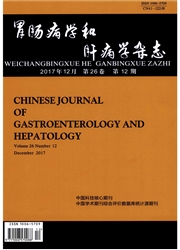

 中文摘要:
中文摘要:
目的观察微重力生物反应器内拟胚体(EBs)的形成及其EBs来源细胞的肝细胞与心肌细胞分化。方法将未分化鼠胚胎干细胞(Es细胞)以1×10^6/mL移人微重力反应器内旋转培养,6d后取出反应器内形成的EBs接种于培养板培养,使用含DMSO、地塞米松等IMDM培养液继续培养10d。动态观察EBs形成和EBs来源细胞分化细胞形态特征,采用Western blot、免疫荧光染色方法检测EBs来源细胞肝细胞及心肌细胞标志物的表达。结果生物反应器旋转培养6d形成均一的拟胚体,接种后移行细胞中出现肝细胞特征样细胞和自发性搏动细胞,Western blot检测到EBs来源细胞肝细胞标志物Alb表达,免疫荧光染色分别检测出肝细胞标志物Alb、AFP和心肌细胞标志物GATA4的表达。结论微重力生物反应器可加快EBs的形成。EBs来源细胞可有效地向肝细胞及心肌细胞分化,两种细胞之间可能存在相互作用。
 英文摘要:
英文摘要:
Objective To investigate the formation of embryoid bodies (EBs) in a microgravity bioreactor and the differentiation of EBs derived cells into hepatocytes and cardiomyocytes. Methods Undifferentiation embryonic stem cells ( ES cell) at a final concentration of 1×10^6 cells per 1 mL of medium were seeded onto a rotary microgravity bioreactor for EBs forming. The 6-day-old EBs were seeded in plates and cultured in IMDM medium containing DMSO, dexamethasone, for 10 days. The formation and differentiation of EBs derived cells were examined by microscopes. The expressions of hepatocyte markers and cardiomyocyte markers were examined using Western blot testing and immunostaining. Results Homogeneous EBs were formed in bioreactor after 6 days' rotary culture. Hepatocyte-like cells and spontaneously beating cardiomyocytes were observed in EBs derived cells by phase-contract microscope after 5 days and 8 days culture of EBs in plates. The protein bands for ALB were visible in the EBs derived cells on day 5 and l0 culture. Immunocytochemistry staining revealed that the ESc derived cells expressed hepatocyte markers, albumin and α-fetoprotein, as well as cardiomyocyte markers, GATA4. Conclusion EBs formation could be speed up by a simulating microgravity bioreactor. EBs derived cells could be differentiated into hepatocytes and cardiomyocytes. An interaction should be present between the two differentiated cells.
 同期刊论文项目
同期刊论文项目
 同项目期刊论文
同项目期刊论文
 期刊信息
期刊信息
